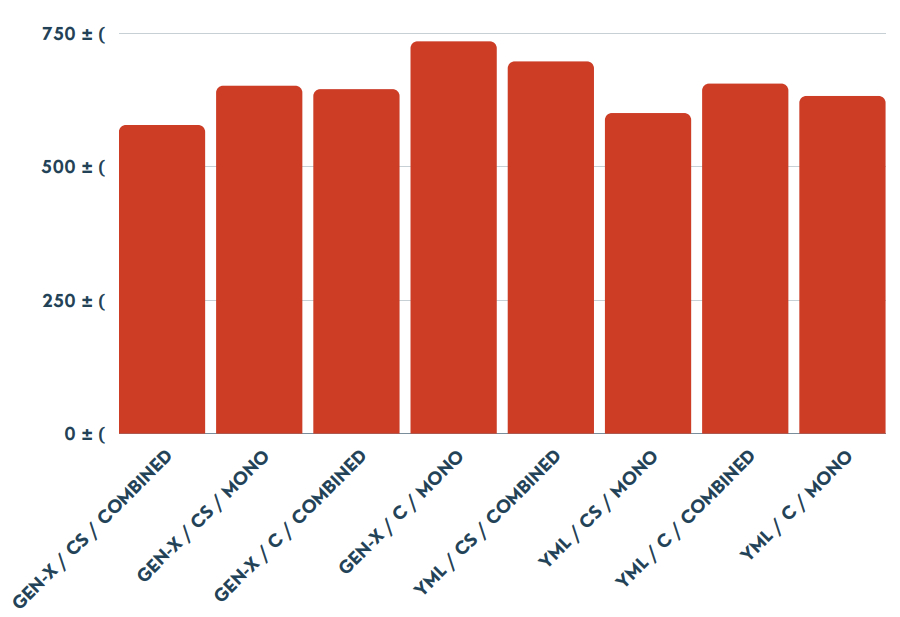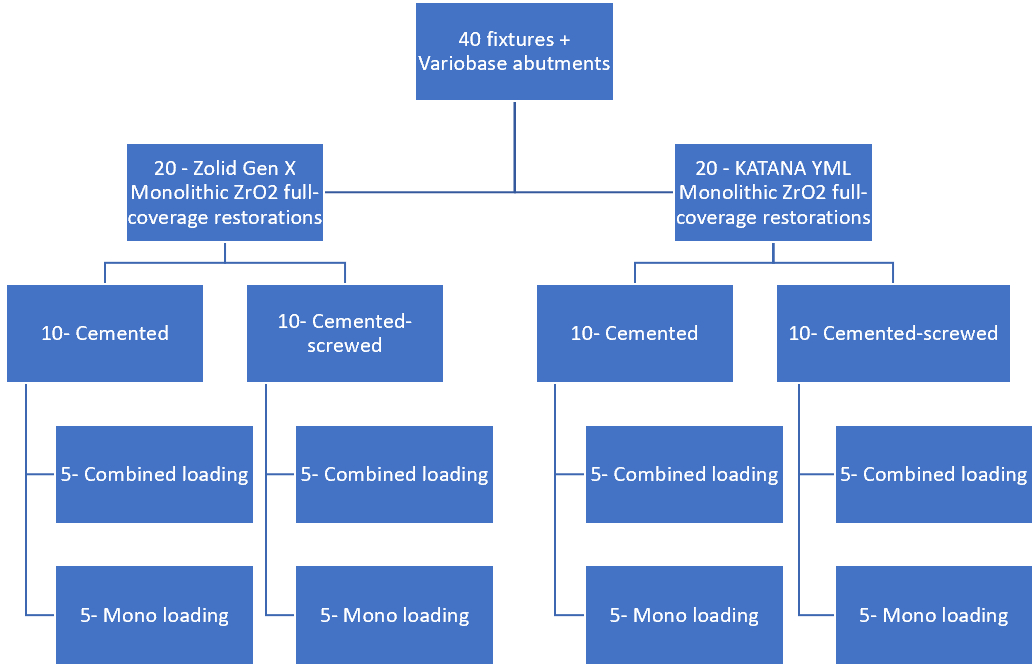IADR Abstract Archives
Cement-Retained VS Cement-Screw-Retained Implant-Supported Transluscent Monolithic Zirconia Crowns: A Comparative In Vitro Study
Objectives: to compare cement-retained and cement-screw-retained implant-supported translucent monolithic zirconia crowns on Variobase abutment.
Methods: Forty (N= 40) endosseous titanium (Ti) dental implants were embedded in acrylic resin. forty anterior monolithic crowns were fabricated and milled from two different A2 shaded prefabricated ZrO2 blanks; Zolid Gen-X (4Y-TZP) and KATANATM YML (3&4 Y-TZP). Half of the crowns for each brand (n=20) were designed and milled with a screw access hole and the remaining half were milled without access holes (n=20). crowns with screw access hole (n=20), were first cemented on prefabricated Variobase Ti abutments using dual-cure, self-adhesive resin cement and assembled with implants as cement-screw restoration using manufacturer’s abutment screw. The screw access hole was closed using composite resin. crowns without screw access hole (n=20), were cemented using same resin cement on prefabricated Variobase Ti abutments that were assembled with implants already using the manufacturer’s abutment screw. Half number of samples (n=20), were subjected to combined loading; aging, thermo-cyclic loading, and load to fracture test using universal testing machine, the other half (n=20), were subjected to mono loading; only load to fracture test. Failure modes were seen under digital microscope and captured.
Results: Independent t –test and ANOVA test and chi-square test were used for comparison among subgroups.The level of significance was set at P<0.05.No statistically significant differences between the fracture strength of samples that were subjected to combined loading and samples that were subjected only to mono loading.YML type of monolithic zirconia restorations had statistically significant difference in fracture strength between samples.No statistically significant difference between compared retention methods (cement retained and cement-screw retained).
Conclusions: Aging and thermo-cyclic loading solely have no detrimental effect on fracture strength of high translucent monolithic zirconia restorations.The most recorded failure mode was abutment fracture, whether complete or partial separation.translucent monolithic zirconia restorations including both cemented and cement-screw retained restoration, might be predictable treatment option for anterior implant supported restorations.
Methods: Forty (N= 40) endosseous titanium (Ti) dental implants were embedded in acrylic resin. forty anterior monolithic crowns were fabricated and milled from two different A2 shaded prefabricated ZrO2 blanks; Zolid Gen-X (4Y-TZP) and KATANATM YML (3&4 Y-TZP). Half of the crowns for each brand (n=20) were designed and milled with a screw access hole and the remaining half were milled without access holes (n=20). crowns with screw access hole (n=20), were first cemented on prefabricated Variobase Ti abutments using dual-cure, self-adhesive resin cement and assembled with implants as cement-screw restoration using manufacturer’s abutment screw. The screw access hole was closed using composite resin. crowns without screw access hole (n=20), were cemented using same resin cement on prefabricated Variobase Ti abutments that were assembled with implants already using the manufacturer’s abutment screw. Half number of samples (n=20), were subjected to combined loading; aging, thermo-cyclic loading, and load to fracture test using universal testing machine, the other half (n=20), were subjected to mono loading; only load to fracture test. Failure modes were seen under digital microscope and captured.
Results: Independent t –test and ANOVA test and chi-square test were used for comparison among subgroups.The level of significance was set at P<0.05.No statistically significant differences between the fracture strength of samples that were subjected to combined loading and samples that were subjected only to mono loading.YML type of monolithic zirconia restorations had statistically significant difference in fracture strength between samples.No statistically significant difference between compared retention methods (cement retained and cement-screw retained).
Conclusions: Aging and thermo-cyclic loading solely have no detrimental effect on fracture strength of high translucent monolithic zirconia restorations.The most recorded failure mode was abutment fracture, whether complete or partial separation.translucent monolithic zirconia restorations including both cemented and cement-screw retained restoration, might be predictable treatment option for anterior implant supported restorations.


